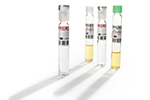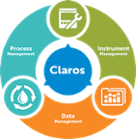-
Produkte
-
Laborgeräte
-
Labor-Messgeräte und Elektroden
Kalibrierstandards
- Chemikalien, Reagenzien und Standards
-
Online-Analysatoren
Analysatoren der EZ-Serie
- Eisen
- Aluminium
- Mangan
- Phosphat
- Chlorid
- Cyanid
- Fluorid
- Sulfat
- Sulfid
- Arsen
- Chrom
- Kupfer
- Nickel
- Zink
- Ammonium
- Gesamt-Stickstoff
- Gesamt-Phosphor
- Phenol
- Flüchtige Fettsäuren
- Alkalinität
- ATP
- Härte
- Toxizität
- Probenvorbereitung
- Bor
- Farbe
- Nitrat
- Nitrit
- Kieselsäure
- Wasserstoffperoxid
- EZ Series Reagents
- Anorganische Stoffe – EZ sc-Serie
- EZ Series Zubehör
- Metalle – EZ sc-Serie
- Nährstoffe – EZ sc-Serie
-
Online-Sensoren und Controller
Digitale Controller (Transmitter) Controller (analog)
- SC4500
- Orbisphere 366x Ex
- Orbisphere 410/510 Kohlendioxid
- Orbisphere 410/510 Ozon
- Orbisphere 410/510 Sauerstoff
- Orbisphere 51x Wasserstoff
- 3400 Analoge Kontakt-LF
- 3400 Digitale Kontakt-LF
- 3700 Analoge induktive LF
- 3700 Digitale induktive LF
- 3798 sc Elektrodenfrei
- 9525 DCCP System
pH- und Redox-Sonden- 12 mm pH/Redox
- 1200-S Redox
- 1200-S pH
- 8362 sc Reinstwasser
- Differential pH
- Digital Differential Redox
- Digital Differential pH
- Kombination pH/Redox
- LCP Redox
- LCP pH
- Automatisierte Laborsysteme
- Multiparameter Online Panels
- Claros Water Intelligence System
- Probenehmer
-
Laborgeräte und Verbrauchsmaterial
Instrumente Allgemeines LaborverbrauchsmaterialGeräteGlas-/KunststoffprodukteLiteratur und Referenzmaterial
- Testkits und Streifen
-
Mikrobiologie
Gebrauchsfertige Nährmedien
- BART Tests
- Flüssiges MPN
- Gesamtkeimzahl Nährmedien
- Hefe und Schimmelpilze
- MUG Röhrchen
- Membran-Filtration
- P/A (An-/Abwesenheit)
- Paddle Testers
Laborbedarf- Flaschen, Röhrchen, Küvetten und Gestelle
- Mikrobiologie Filter
- Petrischalen & Zubehör
- Probensammelbeutel
- Trichter, Pumpen und Anschlüsse
- Zubehör
Trockennährmedien Zubehör und Chemikalien - Elektrochemie
-
Laborgeräte
- Parameter
-
Softwarelösungen
-
Claros Water Intelligence System
Produktsäulen Process Management
- Lösungen für:
- BSB-/CSB-Entfernung
- Nitrifikation/Denitrifikation
- Phosphorelimination
- Schlammbehandlung
Data Management- Lösungen für:
- Erfassung
- Visualisierung & Analyse
- Berichterstattung
- Datengenauigkeit
Instrument Management- Lösungen für:
- Wartung
- Fehlerbehebung
- Fernzugriff
- Labor- und Prozessvergleich
Branchenheraus-
forderungen Einhaltung gesetzlicher Vorschriften Kosteneinsparungen Fernbetrieb Data Management Prozessoptimierung Gerätewartung
-
Claros Water Intelligence System
- Branchen
- Unterstützung
- News
Switzerland
Wählen Sie Ihr Land oder Ihre Region aus:
Europe
Americas
Asia - Australasia
- Australia
- Mainland China
- India
- Indonesia
- Japan
- Malaysia
- New Zealand
- Philippines
- Singapore
- South Korea
- Thailand (Thai)
- Taiwan
- Vietnam
Middle East - Africa
Phosphore
Qu'est-ce que le phosphore ?
Le phosphore (P) est un élément chimique dont le numéro atomique est 15 et d'une masse atomique de 31. En raison de sa réactivité élevée, le phosphore n'existe pas dans la nature en tant qu'élément à l'état libre. Le phosphore se trouve principalement sous forme de phosphate dans les minéraux. De manière générale, le phosphate est présent dans la croûte terrestre à une concentration de 1 gramme par kilogramme.
Il existe deux types de phosphores élémentaires : le phosphore blanc et le phosphore rouge. Lorsqu'il est exposé à l'oxygène, le phosphore blanc émet une faible lueur causée par l'oxydation (phénomène également appelé chemiluminescence).
Le phosphore fait partie des pnictogènes, groupe élémentaire composé de l'azote, du phosphore, de l'arsenic, de l'antimoine, du bismuth et de l'ununpentium (ou moscovium selon sa récente désignation). Ces éléments forment un groupe en raison de leur structure atomique similaire, grâce à laquelle ils peuvent créer des composés stables en exploitant leur tendance à former des liaisons covalentes doubles et triples. Les pnictogènes sont à l'état solide à température ambiante, à l'exception de l'azote, qui lui reste à l'état gazeux.
Les organismes complexes comme les plantes et les animaux ont besoin du phosphore, car les phosphates sont un composant de l'ADN, de l'ARN, de l'ATP et des phospholipides. Le phosphore est extrait pour une utilisation dans les détergents, les pesticides, les agents neurotoxiques et, surtout, les engrais.
Phosphates/orthophosphates
L'orthophosphate (l'une des formes de phosphates les plus communes) est composé d'un atome de phosphore et de quatre atomes d'oxygène. L'orthophosphate est parfois appelé « phosphore réactif », car il forme facilement des liaisons avec d'autres éléments et composés déficitaires en électrons. Cela s'explique par les trois électrons « supplémentaires » des atomes d'oxygène, qui cherchent fortement à se lier avec d'autres protons.
Phosphates condensés
Les phosphates condensés désignent des molécules d'orthophosphate multiples qui sont « condensées » entre elles et qui partagent une liaison covalente avec le phosphore (P) contigu et les atomes d'oxygène (O). Ce groupe comprend le métaphosphate, le pyrophosphate et le polyphosphate, souvent utilisés pour la régulation de la corrosion dans les réseaux de distribution d'eau potable.
Phosphore total/phosphore organique
Le phosphore total désigne l'ensemble du phosphore présent : orthophosphate/phosphates, phosphates condensés et phosphore organique. En général, le phosphore organique est présent sous forme de phosphates dans un composé organique ou liés à celui-ci.
Pourquoi mesurer le phosphore ?
Bien que les phosphates n'engendrent pas de problèmes au niveau du goût ou de l'odeur et, par conséquent, peuvent ne pas être contrôlés dans l'eau potable, des concentrations élevées de phosphate dans les rejets d'eaux usées peuvent avoir un impact considérable sur l'écosystème environnant. De forts niveaux de phosphates dans les sources d'eau peuvent accélérer la croissance des algues et des plantes, contribuant ainsi à l'eutrophisation et à la prolifération des algues. Dans ce cas, les poissons et la vie aquatique se voient dépourvus d'oxygène, entraînant la mort de nombreux poissons et la destruction de l'habitat. La mesure du phosphate dans les effluents d'eaux usées est essentielle au maintien d'un écosystème sain et à la préservation de la faune. De nombreux territoires ont imposé des limites strictes sur le rejet des phosphates afin de protéger l'écosystème dans lequel ces eaux sont rejetées. Outre la préservation de l'écosystème, l'absence de mesure et de surveillance de vos concentrations de phosphate peut mener à des infractions passibles de pénalités. Il peut être nécessaire aux stations de production d'eau potable qui utilisent des phosphates pour la régulation de la corrosion de surveiller les phosphates dans l'eau traitée, dans le réseau de distribution et au cours des autres étapes du procédé de traitement. Les solutions Hach® sont conçues pour vous permettre de rester en conformité et donner à vos opérateurs les connaissances requises à la prise de décisions en matière de traitement.
Chez Hach, trouvez l'équipement de test, les ressources, la formation et le logiciel dont vous avez besoin pour surveiller et gérer avec succès les niveaux de phosphore dans votre application de procédé spécifique.
Produits associés pour la mesure du phosphore
Les analyseurs Phosphax de Hach sont conçus pour les installations extérieures robustes et offrent un accès facile aux réactifs et aux pièces réparables.
Acheter en ligneAnalyseurs de Phosphore Total EZ Série
Les analyseurs en ligne de la série EZ fournissent plusieurs options pour surveiller la concentration de phosphore total dans l'eau.
Acheter en ligneAnalyseurs de Phosphate EZ Série
Les analyseurs en ligne de la série EZ fournissent plusieurs options pour surveiller la concentration de phosphate dans l'eau.
Acheter en ligneAnalyseur de Phosphate 5500 sc
L'analyseur de phosphate 5500 sc ne nécessite que 2 litres de réactif pour un fonctionnement sans surveillance pendant un maximum de 90 jours, soit deux fois plus longtemps que les modèles précédents de la série 5000.
Acheter en ligneHach est un leader de l'innovation en matière de spectrophotométrie et propose de nombreux instruments spectrophotométriques à la pointe du marché de l'analyse de l'eau.
Acheter en ligneQue vous recherchiez un appareil monoparamètre tel que le DR300 ou un instrument plus sophistiqué et convivial tel que le DR900, capable de mesurer de nombreux paramètres avec un maximum de 90 méthodes, nous avons la solution qu'il vous faut.
Acheter en ligneHach s'engage à fournir des réactifs de haute qualité pour les analyses de routine et les analyses complexes de l'eau.
Acheter en ligneLe LT200 est conçu pour vous faire gagner du temps et assurer la précision des tests nécessitant une digestion des échantillons.
Acheter en ligne
Quels sont les procédés qui nécessitent une surveillance de la concentration de phosphore ?
Eau potable
Les sources d'eau peuvent contenir des concentrations élevées de phosphates dues au ruissellement agricole, ce qui peut entraîner l'eutrophisation de l'eau de surface, et donc la prolifération d'algues et la libération de cyanotoxines. Les phosphates condensés sont souvent utilisés pour la régulation de la corrosion dans les réseaux de distribution d'eau potable. Par conséquent, les procédés de traitement de l'eau potable peuvent nécessiter une surveillance du phosphate dans l'eau brute et l'eau traitée pour distribution.
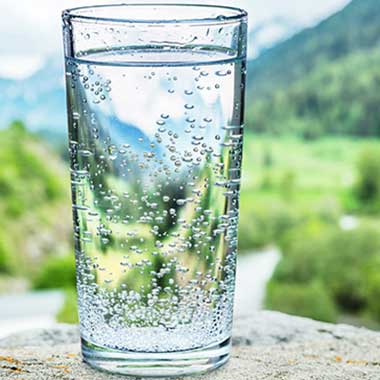
Traitement des eaux usées
Le phosphore est un nutriment essentiel aux plantes et plus particulièrement à la croissance des algues. Le rejet de phosphore et d'autres nutriments essentiels dans les effluents d'eaux usées stimule la prolifération des algues dans les cours d'eau dans lesquels les eaux usées sont rejetées. Les algues entraînent des problèmes au niveau du goût et de l'odeur, sont peu esthétiques et ont pour principal inconvénient de créer un gigantesque besoin en oxygène après leur efflorescence. L'appauvrissement de l'oxygène provoqué par les efflorescences algales mourantes est toxique pour les poissons et entraîne d'autres perturbations importantes du milieu aquatique. Pour toutes ces raisons, les organismes de réglementation imposent bien souvent des règles strictes sur la quantité autorisée de phosphore dans les rejets d'eaux usées.
Les méthodes les plus courantes pour éliminer le phosphore des eaux usées sont l'élimination biologique et la précipitation chimique. Ces procédés sont généralement appelés traitements tertiaires et nécessitent la surveillance du phosphore.
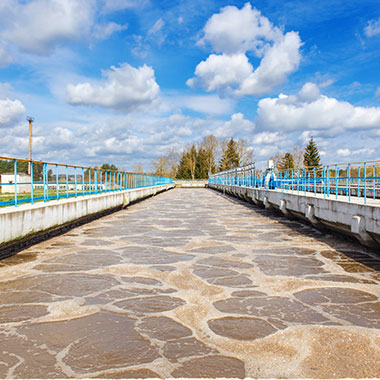
Comment le phosphore est-il surveillé ?
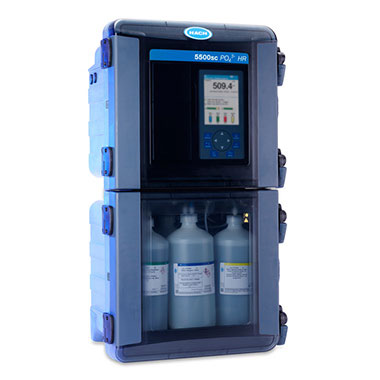
Méthodes colorimétriques (orthophosphate)
L'orthophosphate (phosphore réactif) est mélangé à du molybdate dans un milieu acide pour obtenir une couleur bleue ou jaune. Veuillez noter qu'aucun test d'analyse n'est infaillible et que certains phosphates condensés peuvent également être mesurés par ces tests. En raison de la chimie acide, de l'orthophosphate en suspension peut être détecté si l'échantillon n'a pas été filtré à 0,45 micromètre au préalable. Pour mesurer l'ensemble du phosphore, y compris les phosphates particulaires, il est nécessaire d'utiliser un test de phosphore total, qui comprend une digestion rigoureuse pour convertir la plupart des phosphates particulaires en forme dissoute.
Paillasse/portable :
TNT843 ULR Method 10209 (Reactive and Total)
LCK349, méthode 10209 (réactif et total)
LCK348 Method 10209 (réactif et total)
LCK350 Method 10210 (réactif et total)
LCK049 Molybdovanadate Method 10214 (réactif et total)
Molybdovanadate TNT HR Method 8114
Réactifs Chemkey pour Orthophosphates, gamme basse
Réactifs Chemkey pour Orthophosphates, gamme haute
En ligne :

Pour mesurer les phosphates condensés, il est d'abord nécessaire de les transformer en orthophosphate à l'aide d'acide sulfurique et de chaleur en digérant l'échantillon à 150 °C pendant 30 minutes. Cette procédure est dénommée « phosphate hydrolysable dans l'acide », car les phosphates condensés sont hydrolysés en orthophosphate. Après la digestion, on utilise des méthodes soit à l'acide ascorbique, soit au molybdovanadate pour mesurer l'orthophosphate. Certains phosphates organiques seront également hydrolysés en orthophosphate, de sorte que le résultat n'est pas un phosphate condensé « pur ». Bien entendu, une simple digestion et un test colorimétrique vous indiqueront la concentration de l'orthophosphate d'origine et des phosphates condensés. Si vous souhaitez uniquement déterminer la concentration de phosphate condensé, il vous suffit d'effectuer le test d'orthophosphate sur le même échantillon sans digestion et de soustraire ces résultats de la première valeur de concentration.
Phosphore hydrolysable dans l'acide, TNT LR, méthode 8180 (PhosVer 3)
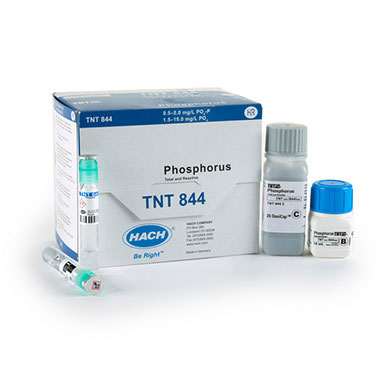
Phosphore total/phosphate organique
Les phosphates organiques sont des composés tenaces qui ont du mal à se décomposer. Leur test nécessite non seulement une digestion préalable de l'échantillon à l'acide sulfurique et à la chaleur, mais aussi l'ajout d'un puissant oxydant comme le persulfate de potassium pour casser les liaisons organiques des orthophosphates. Après la digestion, les mêmes méthodes à l'acide ascorbique ou au molybdovanadate peuvent être utilisées pour la mesure de la concentration de phosphate. Le test décrit convertit toutes les différentes formes de phosphate en orthophosphate pour ainsi obtenir le phosphore total comme résultat. Si vous souhaitez connaître uniquement la concentration de phosphate à liaison organique, il est nécessaire d'effectuer le test d'hydrolyse dans l'acide et de soustraire ces résultats de la concentration de phosphore total (les concentrations de phosphore total seront toujours plus élevées que la concentration d'orthophosphate).
De paillasse :
TNT843 ULR Method 10209 (Reactive and Total)
LCK349 Method 10209 (réactif et total)
LCK348 Method 10209 (réactif et total)
LCK350 Method 10210 (réactif et total))
Total Phosphorus TNT LR Method 8190 (PhosVer 3)
Total Phosphorus TNT HR Method 10127 (Molybdovanadate)
En ligne :
Foire aux questions
L'analyseur Phosphax sc peut-il être utilisé pour les applications d'eau de mer ?
Non, le Phospax sc ne peut pas être utilisé pour les applications d'eau de mer, car cette méthode ne fonctionne que jusqu'à 1 000 mg/L de chlorure. La teneur en chlorure de l'eau de mer est généralement supérieure à 19 000 mg/L.
What is the difference between reactive, acid hydrolyzable, and total phosphorus?
Phosphorus exists in water almost solely as phosphates, which can be dissolved, attached to particles or found in aquatic organisms (bound to organic compounds). Phosphorus levels in natural waters, such as lakes and streams, are typically very low. Elevated phosphorus levels may indicate contamination from raw or treated wastewater, agricultural discharge or industrial waste. Some drinking water plants also add small amounts of orthophosphate or condensed phosphates during post-treatment for corrosion control. Orthophosphate is the simplest form of phosphorus to measure but total phosphorus is considered the best indicator of phosphorus levels in water because it measures all forms.
Phosphates can exist in form of orthophosphate (PO 4 3-) or in larger molecules as condensed phosphates, inorganic polyphosphates or organic phosphates.
Orthophosphate is often referred to as "reactive" phosphorus because it is the only type of phosphorus that will react directly with colorimetric phosphate reagents. Orthophosphate is used by plants, bacteria and algae and is considered a limiting nutrient in water testing.
Condensed phosphates (also called meta, pyro or polyphosphates) have two or more orthophosphate groups that are linked together. They are strong complexing agents and are widely used in treatment systems for boiler water and are also found in many detergents. To measure condensed phosphates, the sample must be analyzed for acid hydrolyzable phosphorus and also orthophosphate: condensed phosphates = acid hydrolyzable phosphorus – orthophosphate.
Organic phosphates contain one or more orthophosphate groups that are attached to an organic molecule, such as sugar. They are formed primarily by biological processes and can be found in organic matter such as plant or animal tissue, in sewage from animal or human waste and food residues, as well as in pesticides. To measure organic phosphates, the sample must be analyzed for total phosphorus and for acid hydrolyzable phosphorus: organic phosphates = total phosphorus - acid hydrolyzable phosphorus.
Both condensed phosphates and organic phosphates are not as stable as orthophosphate and naturally break down into orthophosphate over time. Therefore, an orthophosphate test will likely measure a small amount of condensed phosphates and an acid-hydrolyzable test will measure a small amount of organic phosphates.
Phosphorus relationships are summarized below:
orthophosphate (o- PO 4 3-) = reactive phosphorus
Determined using Hach Methods 8048, 8178 or 8114.
Total Phosphorus (TP) = TIP + Organic PO 4 3-
= o-PO 4 3- + Poly PO 4 3- + Organic PO 4 3-
Determined using Hach Method 8190 or TNT Method 8190.
TNT+ chemistries TNT843, TNT844 and TNT845 can be used with Method 10209 for orthophosphate or Method 10210 for total phosphorus.
Total Inorganic Phosphorus (TIP/Acid Hydrolyzable) = o- PO 4 3- + Poly PO 4 3- (condensed phosphates)
Determined using Hach Method 8180 or Hach TNT Method 8180.
Organic PO 4 3- = TP-TIP
Determined by calculation only.
Condensed Phosphates (Poly PO 4 3-) = acid hydrolyzable phosphorus - orthophosphate
Determined by calculation only.
Quelle est la différence entre la méthode bleue et la méthode jaune utilisées pour mesurer les phosphates ?
Le phosphore réactif peut être mesuré par colorimétrie à l'aide de plusieurs produits chimiques. Tout d'abord, le phosphore réagit avec le molybdate dans une solution acide pour former un complexe phosphomolybdate. Pour les mesures de basse valeur, le complexe phosphomolybdate est réduit à l'aide d'un acide aminé ou ascorbique, créant ainsi un bleu de molybdène caractéristique. Pour les mesures de haute valeur, on fait réagir le complexe phosphomolybdate avec un réactif au vanadium pour créer un produit de couleur jaune. L'intensité de la couleur des complexes bleus et jaunes est proportionnelle à la concentration de phosphore dans l'échantillon.
DOKUMENTE UND KATALOGE
- Sicherheitsdatenblätter
- Kalibrierungszertifikate
- Chargenzertifikate
- Produktsicherheit
- Datenbank für Ausschreibungsunterlagen
- FAQ
- E-shop Hach
- Do Not Sell or Share My Data
- Datenschutz-Bestimmungen
- Cookie-Richtlinie
- TERMS AND CONDITIONS OF SALE FOR HACH® PRODUCTS [SWITZERLAND]
- Lösungen für die Wasseranalytik – im Labor & unterwegs




